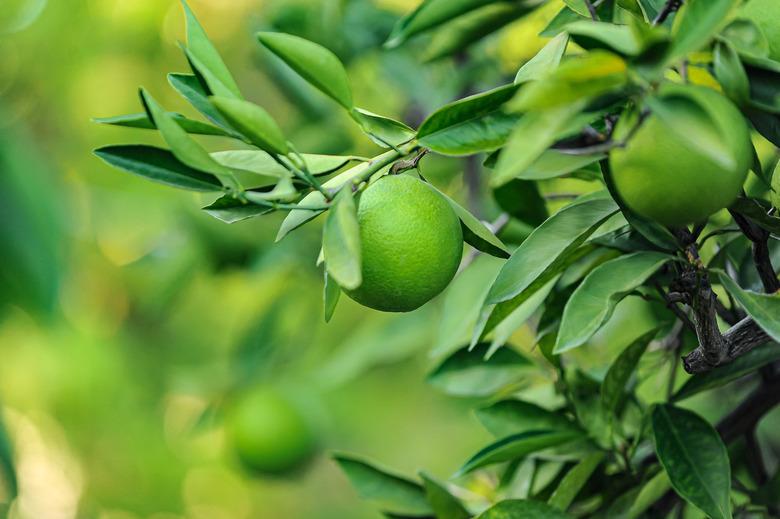How To Tell If Limes Are Ripe
Do you love a mojito, freshly squeezed limeade, or lime-flavored main dishes? When growing fruit trees, harvesting is a key consideration. Getting the timing just right to pick a ripe lime (Citrus aurantifolia) ensures you get the best citrus flavor possible no matter how you use your limes. The color, skin texture, smell, and weight can help you decide when it's time to pick your limes.
No Ripening After Picking
Like all citrus fruit, limes don't ripen after you pick them. That means you can't pick them early and wait for them to reach the ripeness that you prefer. You'll wait forever and end up with a shriveled, dried-up lime instead of a ripe lime. Pick limes as you need them when they've already reached the level of ripeness you want.
Consider the Color
When you think of limes, you likely think of the color green. Most people assume a ripe lime is bright green, but many lime species aren't ripe until they turn pale green or yellow. Familiarize yourself with the types of lime trees you have and the ideal color for harvesting. For example, key limes are usually pale yellow when ripe, while Tahitian limes are usually greenish-yellow when they're ripe. Ripe limes also have a consistent color, not just a few patches of yellow or pale green.
You can pick limes when they're green for the traditional tartness that many people associate with the fruit. You can also leave them on the trees a little longer until they start to turn yellow. A yellow lime will have more juice and be less acidic. They're also sweeter than green limes since the sugars have more time to develop.
Feel the Skin
Since a range of colors can work for limes, other tips, like the skin's texture, can help. A quick squeeze of a lime still on the tree can help you determine if it's ready. If the lime has no give when you squeeze it, it's likely not ripe enough. On the other end of the spectrum, a super soft and squishy lime is probably past its prime. You want something in the middle that has a little give but doesn't squeeze too easily.
Smell the Fruit
Take the trick of smelling produce at the grocery store to the orchard. A ripe lime has a distinct smell that's fresh and zesty. It's the classic lime smell you expect. Get up close to the limes you're thinking about picking and inhale deeply. If you're left searching for the scent, leave the fruit on the tree to mature more.
Check the Weight
Weight can be a factor in deciding which limes are best. Lift each lime gently while it's still on the branch to compare the weight. The fruits that feel heavier usually have more juice in them, which makes them more flavorful and easier to use for juicing. The limes also get heavier as they mature. By testing several limes, you can get an idea of which ones feel heavy and which ones are lighter.
Check Each Ripe Lime
A lime tree usually takes six to nine months from blooming to ripening, but limes on the same tree can ripen at different times. They're often at different maturity levels. Check each lime individually before picking instead of assuming all of the citrus fruits on the tree are ready to be harvested. When you find the perfect lime, use clean pruning shears to clip it off the branch easily without disturbing the other fruit.
